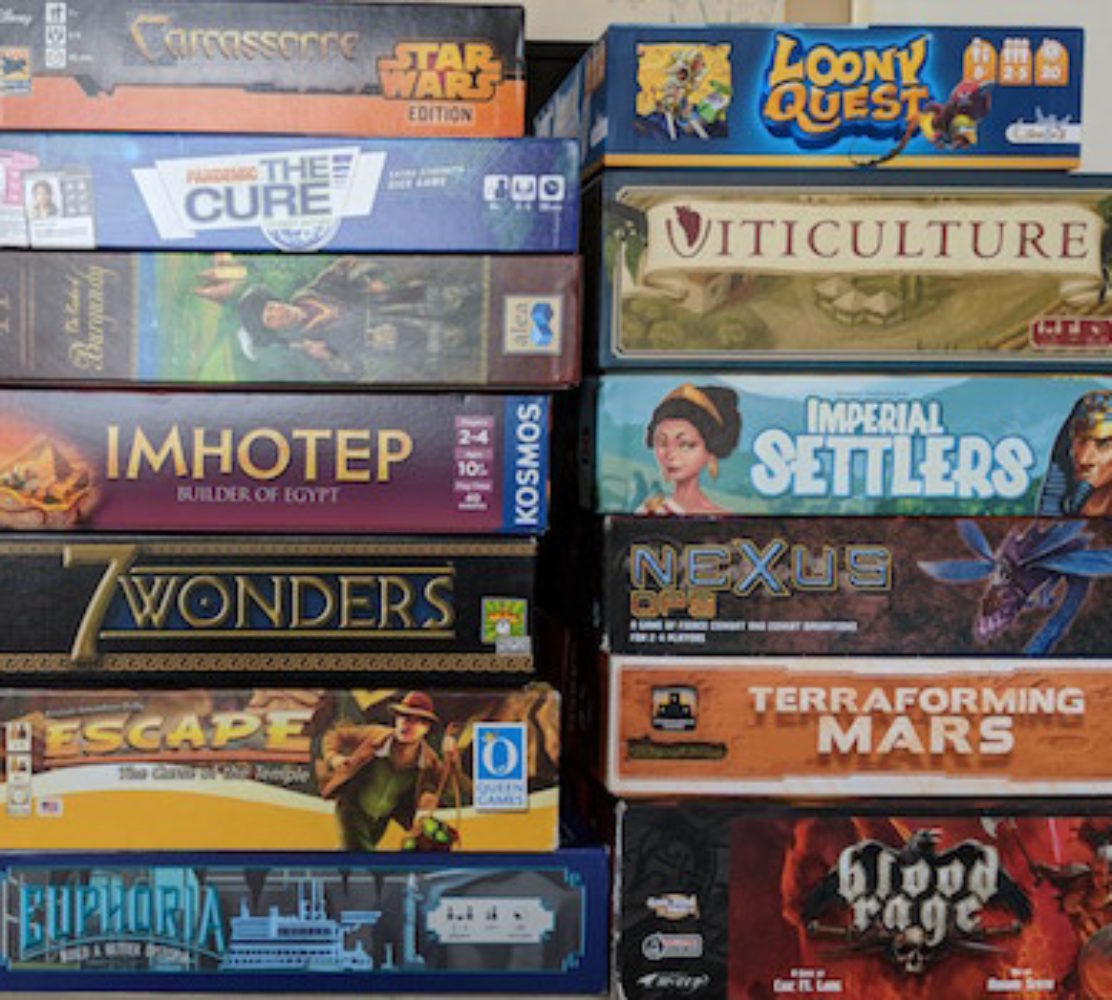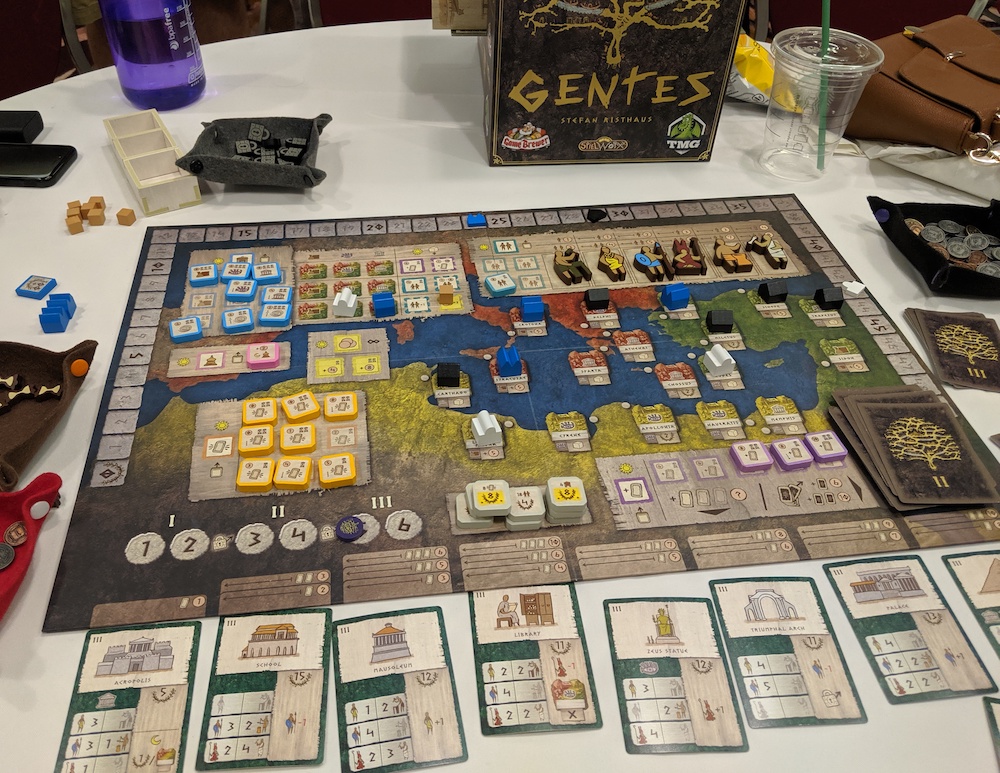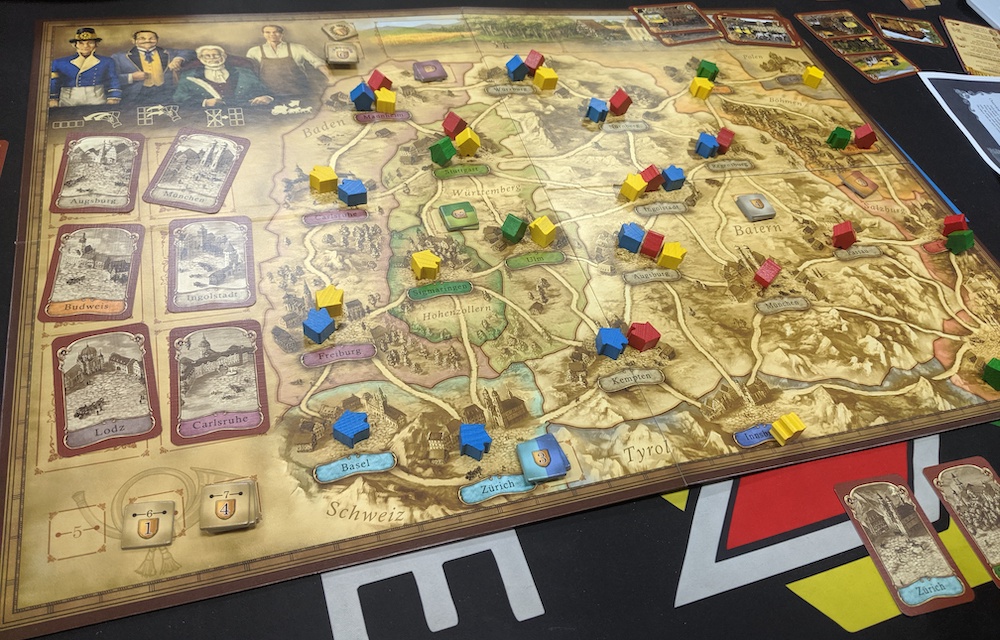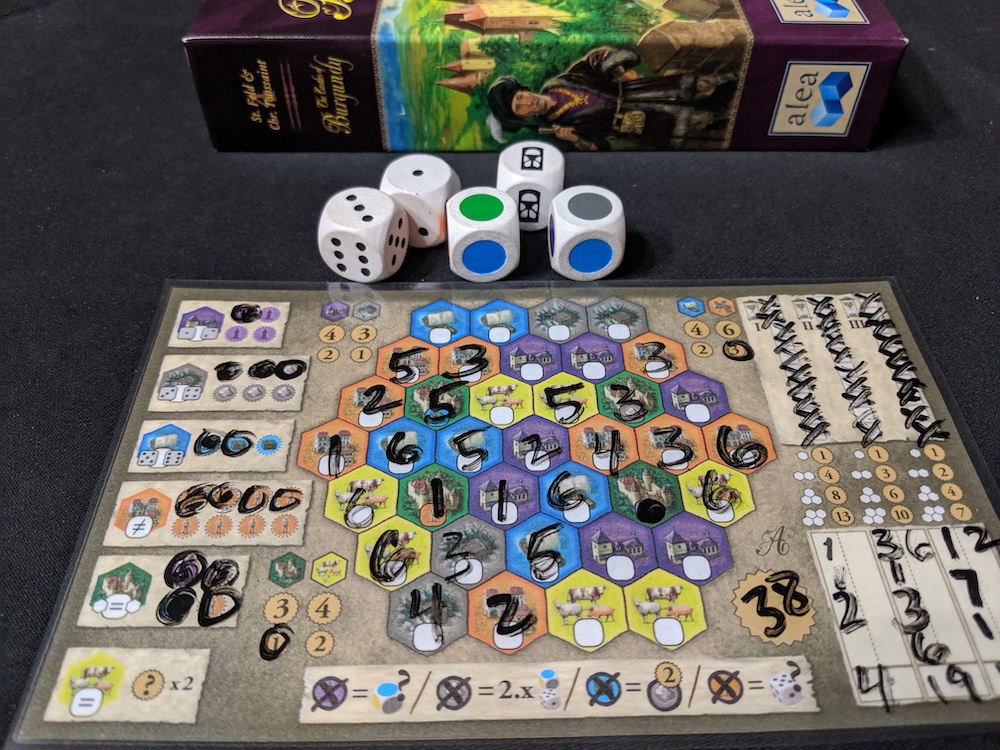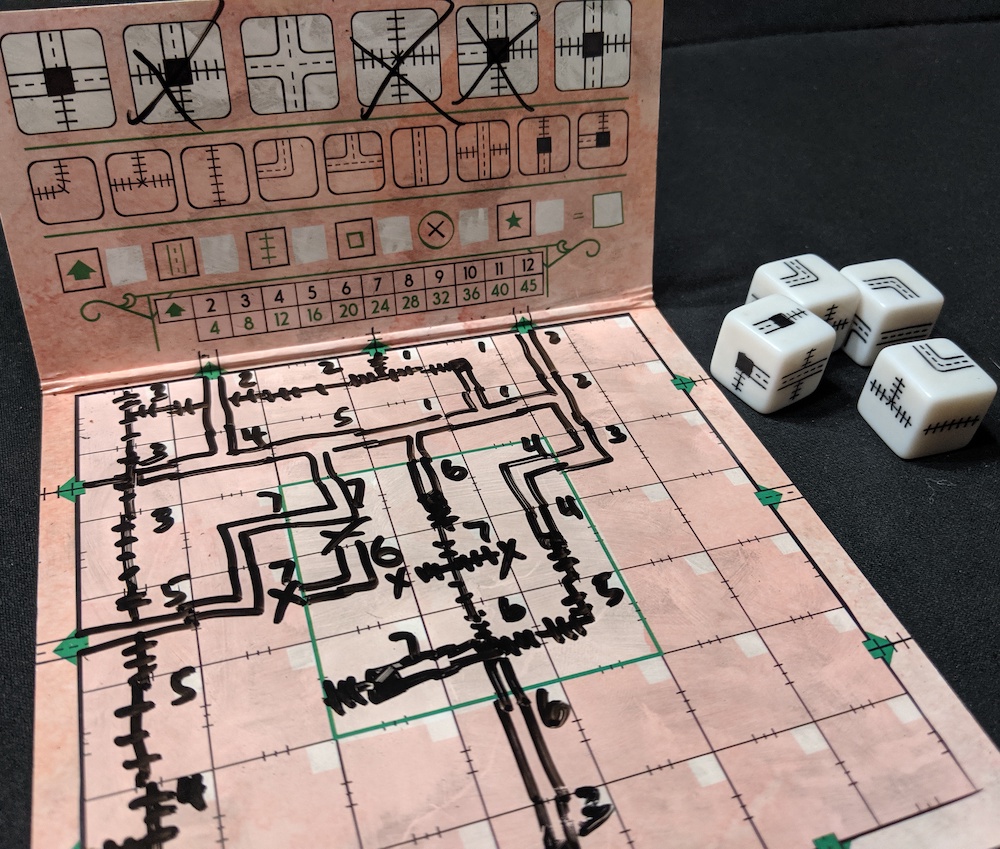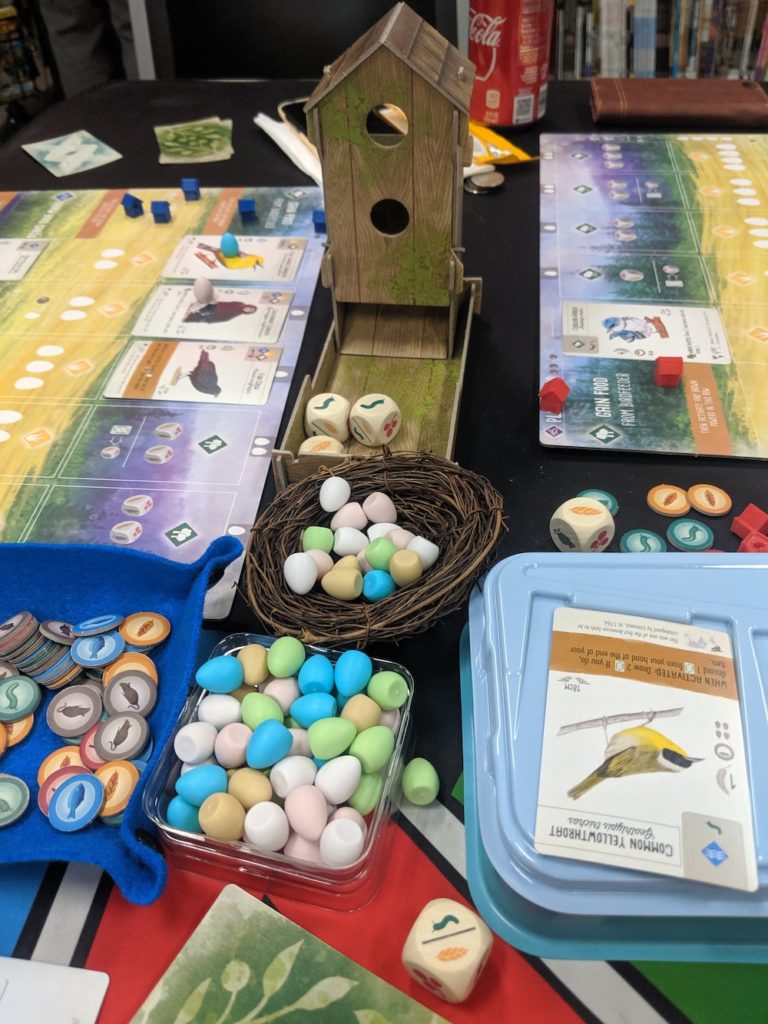I’m posting about a game every day in September! Here’s a link to yesterday’s post.
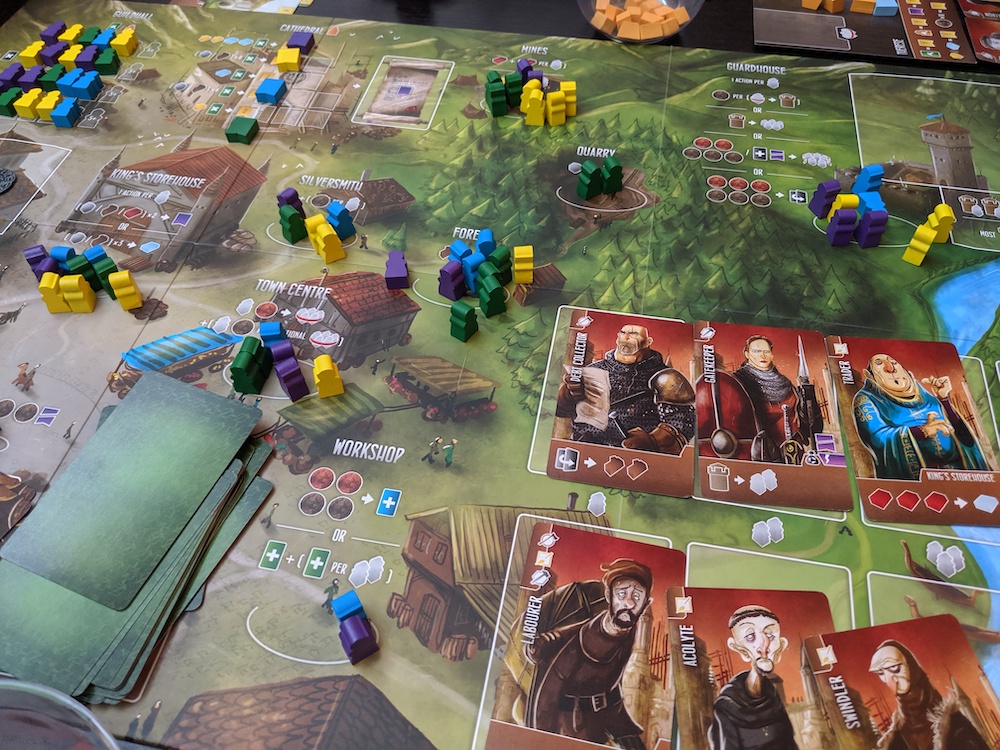
Tonight I solo-ed Architects of the West Kingdom. This game surprised me last year; I’d liked Raiders of the North Sea (even better with the expansion) from the same designer and artist team, but Architects is the better game. The solo game features an Automa-style deck, which does a good job of simulating an opponent.
What appeals to me most about Architects is its wide-open feel. You’re never really blocked from any space and the more workers you have on a space, the more actions/resources you get. One of my favorite mechanisms is related to this: you can capture your opponents’ workers and hold them hostage. If you want you can then send them to prison for money, where your opponents can waste an action to bust them out. Or, if they can’t wait, they can rescue them from your player board by paying the cost.
It’s a solid worker-placement game that one was one of my favorites last year. For new gamers I’d recommend Raiders of the North Sea (without the expansion), but for veterans I’d play Architects.
The photo above is from a game I played with my friends Amanda, John, and David. We got together one warm summer afternoon to help David get closer to his goal of playing the Top 100 BGG games in 100 days. That’s a lot tougher challenge than blogging every day for a month.
